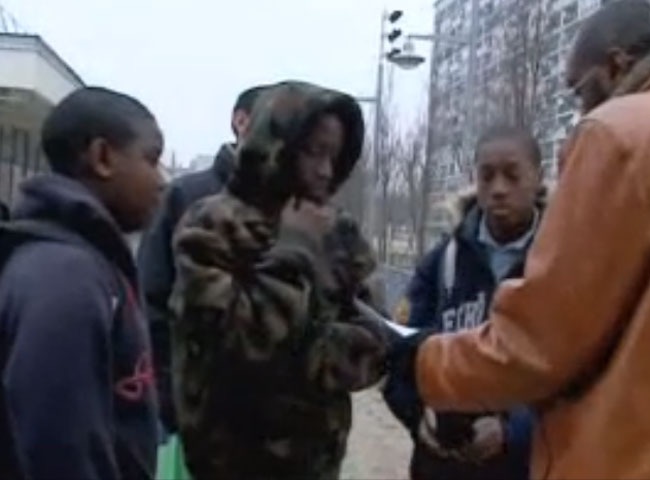Clichy pour l'exemple
-
Réalisé par Alice Diop • Écrit par Alice Diop
-
France • 2006 • 50 minutes • Couleur
- Réalisation :
Alice Diop - Écriture :
Alice Diop - Image :
Clément Alline - Son :
Jean-Pierre Soupin, Gérard Achille, Olivier Foucher, Thomas Ermel - Montage :
Barbara Caspary - Musique originale :
Jérôme Boumendil
- Production (structure) :
Point du Jour - Participation :
Angoa-Agicoa, CNC, FASILD - Fonds action et soutien pour intégr. et lutte contre discriminations, Procirep, France 5 - Ayant droit :
Point du Jour
- N° ISAN :
ISAN 0000-0002-8BC5-0000-N-0000-0000-5
Résumé
De Clichy-sous-Bois tout est parti. La mort de deux adolescents, puis la révolte, la colère et l’indignation. D’ici est parti le brasier qui enflamma comme une traînée de poudre l’ensemble des villes limitrophes avant de se propager au reste de la France. En prenant Clichy pour exemple, ce film tente de sonder les raisons de la colère. J’ai voulu regarder d’ici l’ensemble des violences invisibles, celles qui font rarement la une des journaux, mais qui portent pourtant les germes de la révolte de novembre 2005. De la cité à l’école, de l’école à la mission locale, en passant par le cabinet du maire, chacun essaie chaque jour de lutter contre les injustices sociales qui empoisonnent toujours un peu plus la vie dans les banlieues. Un an après les émeutes, le constat est amer : "Rien de nouveau sous le soleil" à Clichy-sous-Bois.
During a whole month in late 2005, France made the news headlines the world over: rioting in the French suburbs! Young people from the suburbs all over France – often still in college or high school - came together each night to burn dustbins, cars...even schools... The riot prompted the decree of a state of emergency – something that has not been seen in France since the years of the war of independence in Algeria. In an effort towards appeasement, the government made promises to come to the aid of “abandoned” areas. Today, one year later, what has changed for the people in the suburbs? Have they managed to pick up the pieces? Have official bodies managed to transform promises into real measures on the field? Young director Alice Diop - who grew up in neighbouring Aulnay – took the temperature of the area in and around Clichy, the place where the riots broke out following the deaths of two of the town’s youngsters who perished in an electrical transformer station while fleeing from the police.... While immerging herself in the life in a housing complex, Alice brought to light key issues: housing, transport, school and education, the job situation, police violence...In each case, the film shows real situations that demonstrate the difference that exists between the social demands of this suburban population on the one hand, and what’s really being offered the authorities. The film shows that most of the time, the “needy population” is not being listened to and their ability of finding and offering solutions to their own problems is not being accounted for..
Mot(s)-clé(s) thématique(s)
À propos du film
Sélections et distinctions
- 2024 • Festival des 3 Continents • Nantes (France) • Nous, cosmopolites
Comment avoir accès au film ?







